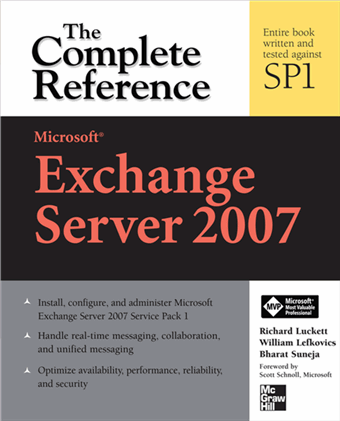In previous versions of Exchange Server, Exchange Virtual Servers (EVSes) are not very different from standalone servers. Besides mailboxes, they can host protocol virtual servers (SMTP, IMAP4, POP3, HTTP/OWA), Public Folders, etc.
Exchange Server 2007's clustering model is simplified further to provide high availability for mailboxes. There is no protocol support - SMTP is the domain of Hub Transport servers, IMAP4, POP3 and HTTP (OWA, Outlook Anywhere or RPC over HTTP, Exchange ActiveSync) are the responsibility of Client Access Server role. Unlike standalone/non-clustered Exchange Server 2007 servers, Clustered Mailbox Servers (CMS - the Exchange 2007 term for EVS) do not co-exist with any other server role.
Clustered Mailbox Servers can host Public Folders, but there are some caveats. The Public Folder Store hosted by the CMS should be the only Public Folder Store in the Organization. If you have Public Folder Stores on other Exchange servers in the Organization, the Public Folder Store on a Clustered Mailbox Server will fail to mount in the case of an unscheduled failover, until the original server and all transaction logs for the Storage Group hosting the Public Folder Store are available.
This is documented in "Planning for Cluster Continuous Replication" in Exchange Server 2007 documentation.
Public Folders have their own high-availability mechanism built-in, and it's been around for a long time. It's Public Folder replication. Clustered Mailbox Servers (using Cluster Continuous Replication) are not good candidates for replication.
Exchange Server 2007's clustering model is simplified further to provide high availability for mailboxes. There is no protocol support - SMTP is the domain of Hub Transport servers, IMAP4, POP3 and HTTP (OWA, Outlook Anywhere or RPC over HTTP, Exchange ActiveSync) are the responsibility of Client Access Server role. Unlike standalone/non-clustered Exchange Server 2007 servers, Clustered Mailbox Servers (CMS - the Exchange 2007 term for EVS) do not co-exist with any other server role.
Clustered Mailbox Servers can host Public Folders, but there are some caveats. The Public Folder Store hosted by the CMS should be the only Public Folder Store in the Organization. If you have Public Folder Stores on other Exchange servers in the Organization, the Public Folder Store on a Clustered Mailbox Server will fail to mount in the case of an unscheduled failover, until the original server and all transaction logs for the Storage Group hosting the Public Folder Store are available.
This is documented in "Planning for Cluster Continuous Replication" in Exchange Server 2007 documentation.
Public Folders have their own high-availability mechanism built-in, and it's been around for a long time. It's Public Folder replication. Clustered Mailbox Servers (using Cluster Continuous Replication) are not good candidates for replication.
Labels: Clustering, Exchange Server 2007

 Exchangepedia Blog is read by visitors from all 50 US States and 150 countries world-wide
Exchangepedia Blog is read by visitors from all 50 US States and 150 countries world-wide



1 Comments:
Is it possible to create more than one Imap virtual server pointing to different IP address in Exchange 2007? I recall in exchange 2003 one could create many Imap servers.
Post a Comment
Links to this post:
Create a Link
<< Home